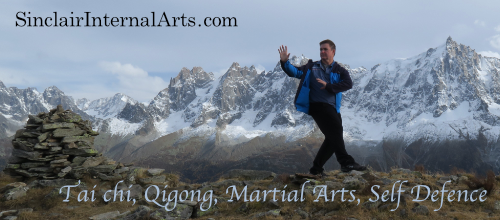Episode 1: What is Tai chi?
It seems that this is the way I will have to do it. Many of these videos will be brief, to compensate for them not being terribly concise.
Also, they might be quirkier than usual.
Consider it a side effect of my being alone a lot, and separated from family for the duration of the pandemic.
You can find these videos on the Introduction to Tai chi page.
Transcript
Tai chi. What is it? Where does it come from? And where is it going to?
If you ask these questions of some people, they will say, “A preposition is something you should never end a sentence with.”
To which I say, “Ave magister. Nos obviam iterum. Cum ultima conversationem nostram, a raccoon vixerit animam suam. How are you? To what are you up?”
But if you ask those questions of other people, the answers will depend on who they are and why they are practicing the art. Because there are so many benefits for Tai Chi that the reasons for doing it vary from person to person. Some of the main categories are:
- Tai Chi is a “relaxing exercise” or
- a “moving meditation” or
- a “martial art” or
- a “tool for improving other martial arts” or,
- “It’s just old people sneaking up on trees.”
But ultimately, these things are all the same. There is no real difference between practicing a martial art, a meditation, a healing exercise, or a fitness system. The goals are all the same. Balance, harmony, tranquility, health. If someone is trying to attack you, they are trying to take those things away from you. They are trying to upset your balance, damage your health, damage your mental well-being. And one of the best defences is to have these things in spades to start with.
People say, “How do you defend your balance and stay relaxed when somebody is attacking you? Well, the secret is to practice being balanced and relaxed when no one is attacking you. Then it is much easier to do so when there is an external threat. So, Tai chi is the art of being balanced, and healthy, and happy.
Yeah. That’s about it.
Okay, let’s get into some details.
